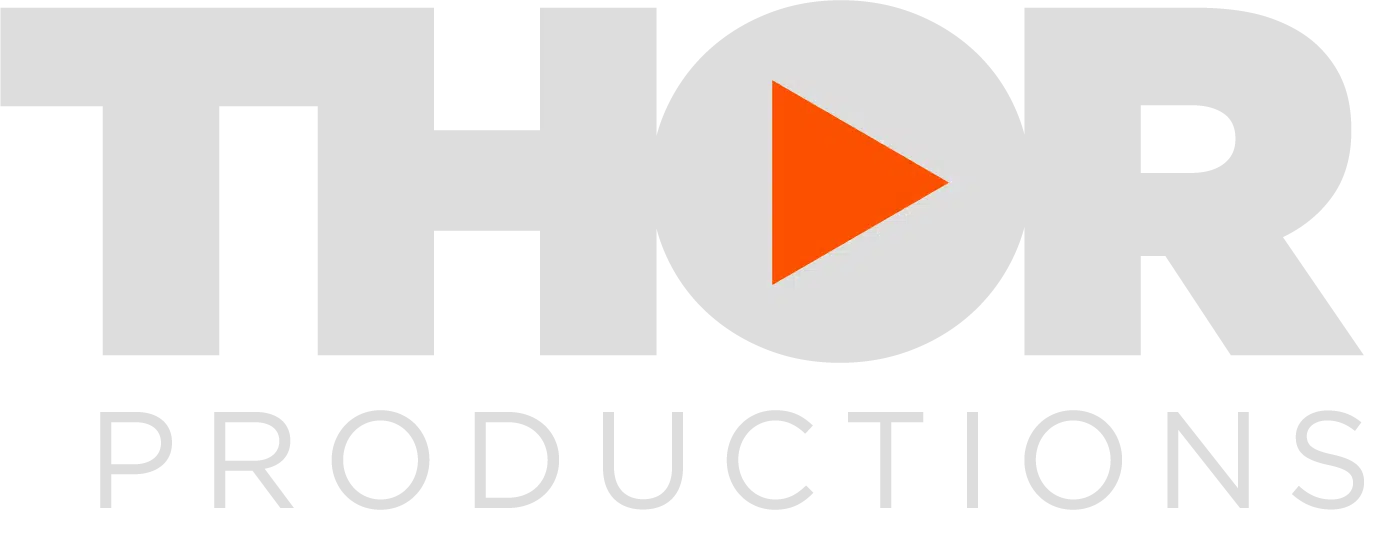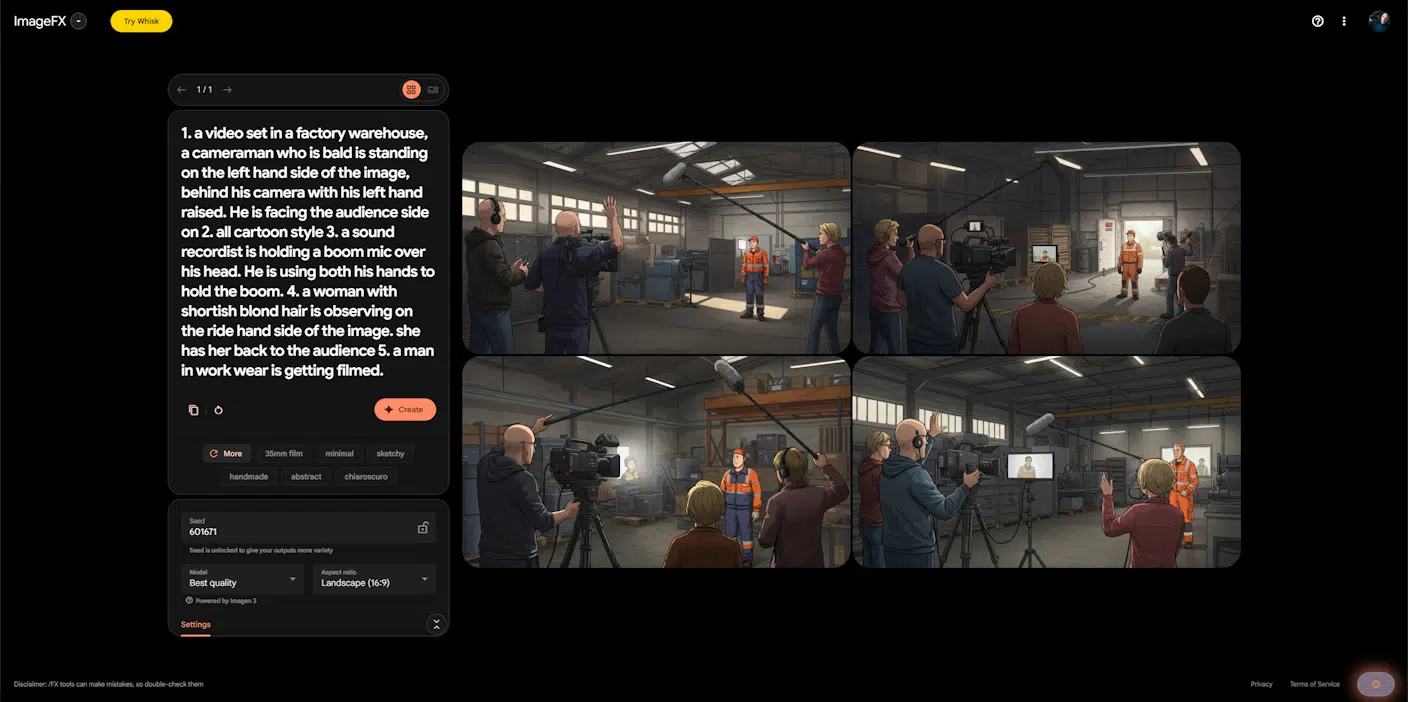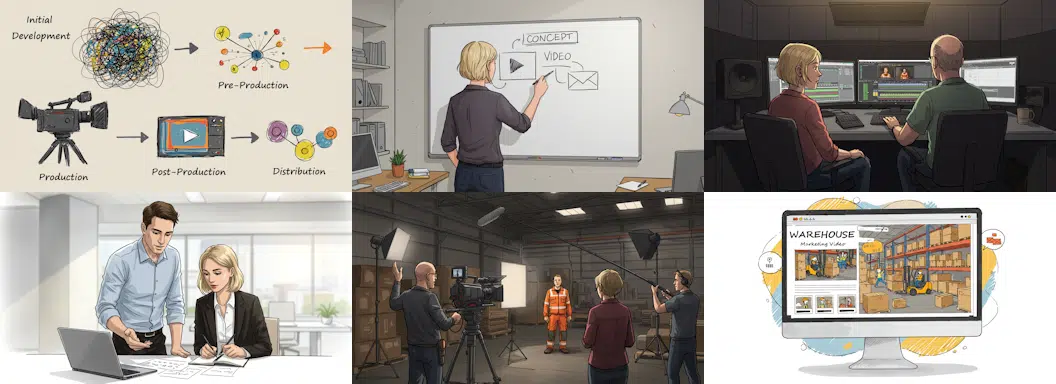
NEW TECHNOLOGIES
A Fictional Client, Me, and a Bunch of AI-Generated Images
I recently discovered Google’s free AI image generation tool, ImageFX, (you will need a GMAIL address to be able to use it) and it quickly became a surprisingly powerful addition to my creative toolkit. As someone who works across all stages of video production, I’m always looking for ways to communicate ideas more clearly, especially during the planning phase. So when I started putting together a blog post on “The 5 Stages of Video Production and How to Plan a Video Shoot”, I decided to experiment with ImageFX to help visually bring the process to life. What started as a quick test turned into a creative exercise in storytelling – with a fictional client and a person resembling me represented throughout the AI-generated imagery.
If you scroll through the blog post, you’ll notice a woman who appears in several images, starting in the “How to Plan a Video Shoot” section. She’s not a real client, but a fictional one I created using prompt engineering. She first appeared in the initial image that kicked off the project – almost by accident. But once I saw how well she fit the role, the idea clicked: she should be the thread that ties all the visuals together. From there, I crafted more detailed prompts to bring her back in each scene. I gave ImageFX enough information to make her feel like a genuine, recurring character throughout the article.

Minimal prompts often yield excellent results in AI-generated imagery.
In the following sections – like “Production” and “Post-Production” – you’ll see me appear as well. In the AI-generated visuals, I’m represented as the cinematographer on set and later as the editor working on the final cut. It took some time to write the right prompts that placed “me” into the scenes naturally, but once I refined the inputs, the results were surprisingly satisfactory.
A little word of warning: creating complex images isn’t for the faint-hearted. The “production” image, for example, took quite a bit of work. The AI tool kept generating things that didn’t quite make sense – like the sound person holding the boom mic incorrectly, no matter how carefully I wrote the prompt. Some details were just ignored or misinterpreted. And occasionally, people would appear with a mysterious third limb, hand, or foot. Let’s just say, having a bit of experience with graphic imaging software really helps! 😊

There are a few things not quite right – can you spot them?
Big Impact, Even for Small Businesses
What’s especially exciting is that this kind of high-quality visual storytelling is now accessible to small businesses like mine. Not long ago, creating a consistent set of professional images like this would’ve required the help of a graphic designer – costly, time-consuming, and not always feasible for smaller projects. But with tools like ImageFX, I can create visuals that support my work, tell a story, and help clients connect with the production process – quickly and affordably.
This isn’t about replacing human creativity. It’s about amplifying it. It’s about using the tools available to make meaningful contributions, even on a smaller scale.

The final images that made it into the blog article.
Embracing Change with Purpose
We’re not going to stop progress, AI is moving forward whether we like it or not. But rather than resist it, we can choose to adopt it, understand it, and find ways to enhance our lives and work through it. For me, that means using AI to create clearer communication, tell better stories, and help my clients visualise ideas they might otherwise struggle to imagine.
RETURN

